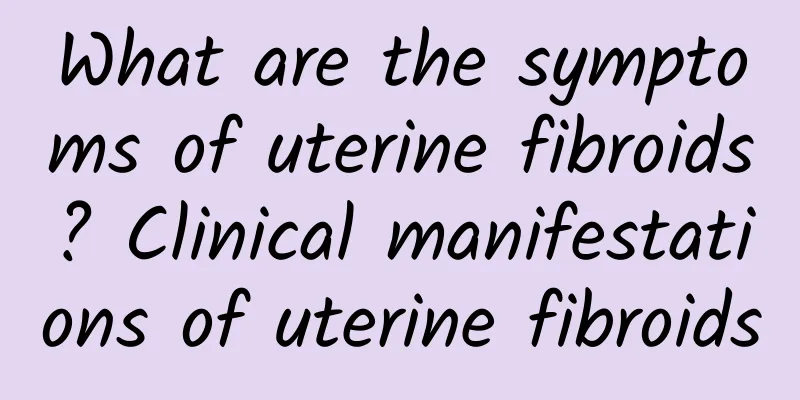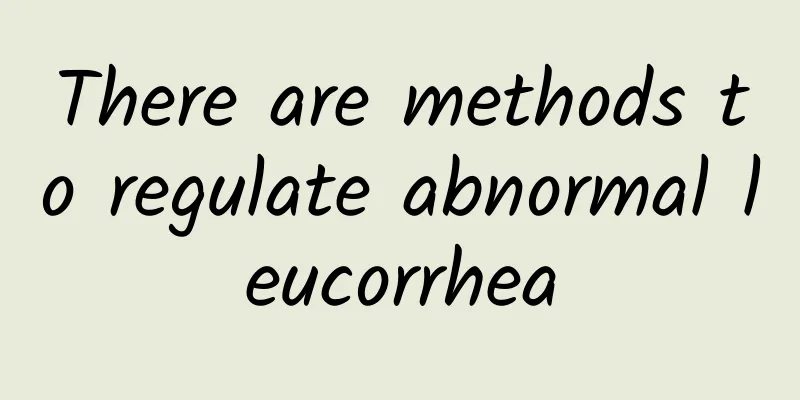What are the symptoms of uterine fibroids? Clinical manifestations of uterine fibroids

|
Symptoms: The symptoms of uterine fibroids and their severity mainly depend on the location, size, number and complications of the fibroids. Some fibroids are small, grow slowly, have no symptoms, and can never be found in a lifetime. In recent years, due to the widespread use of B-ultrasound examinations, many patients are found to have uterine fibroids through B-ultrasound examinations during routine physical examinations, but they are asymptomatic. Most patients come to see a doctor because they have symptoms. Common symptoms of uterine fibroids include uterine bleeding, abdominal masses, vaginal discharge, compression, etc. Recommended reading: How to judge uterine fibroids? Uterine bleeding: Uterine bleeding is the most common symptom of uterine fibroids. The clinical manifestations are menorrhagia, cyclical bleeding, increased menstrual volume, often accompanied by prolonged menstruation, which is the most common type of bleeding; frequent menstruation, shortened menstrual cycle, increased menstrual volume; irregular bleeding, loss of normal menstrual cycle, long duration, less time, dripping, more common in submucosal fibroids. Uterine bleeding is common in submucosal fibroids and intermuscular fibroids, and subserosal fibroids rarely cause uterine bleeding. According to the literature, the uterine bleeding rates of submucosal fibroids, intermuscular fibroids, and subserosal fibroids are 89.5%~100%, 74%~77.7%, and 33.3%~36%, respectively. There are many explanations for the cause of uterine bleeding. ① As the uterus grows, large or multiple myomas will inevitably increase the area of the endometrium. During menstruation, the endometrium will shed a large area, take a long time to repair, bleed a lot, and have a long menstrual period. ②The presence of intramural fibroids hinders the uterus from effectively contracting to control bleeding, resulting in heavy bleeding. ③ Uterine fibroids often occur in the late reproductive age, during menopause. Some patients have small fibroids and heavy menstruation, which may be caused by uterine bleeding associated with sexual dysfunction. Curettage examination to determine the endometrium. |
<<: What are the symptoms of uterine fibroids? Can uterine fibroids cause uterine bleeding?
>>: What are the symptoms of uterine fibroids? Will uterine fibroids cause compression symptoms?
Recommend
What fruits can relieve uterine fibroids? What is the best food for uterine fibroids?
The appearance of uterine fibroids brings great t...
What is the cause of cervical erosion and congestion?
Cervical erosion generally refers to ectopic cerv...
How to treat female cervical hypertrophy
How should women with cervical hypertrophy be tre...
What are the key points to pay attention to in painless abortion?
When it comes to painless abortion, I believe eve...
It is best to exercise before breakfast to burn 30% more fat
Exercise is a well-known good way to stay healthy...
How much does it cost to treat endometrial thickening?
For some common problems of endometrial thickness...
Life details that patients with cervical erosion must pay attention to
During regular treatment, patients with cervical ...
Which hospital is good for treating cervical warts?
When a patient falls ill, he or she will entrust ...
Tips on weight loss that you must know (Part 2)
Drinking soup can also make you thin and beautifu...
How to relieve dysmenorrhea
In daily life, many female friends are troubled b...
How to treat mild cervical erosion? Timely treatment
Cervical erosion can be mild or severe. Many peop...
Can I soak my feet every day if I have ovarian cysts? What is the best way to soak my feet?
There are many benefits for women to soak their f...
Two common early symptoms of cervicitis
Early cervicitis is a relatively mild condition. ...
What are the dietary taboos for adenomyosis?
Adenomyosis has a great impact on health, so when...
What are the common harmful manifestations of uterine fibroids?
Among gynecological diseases, I believe most peop...









